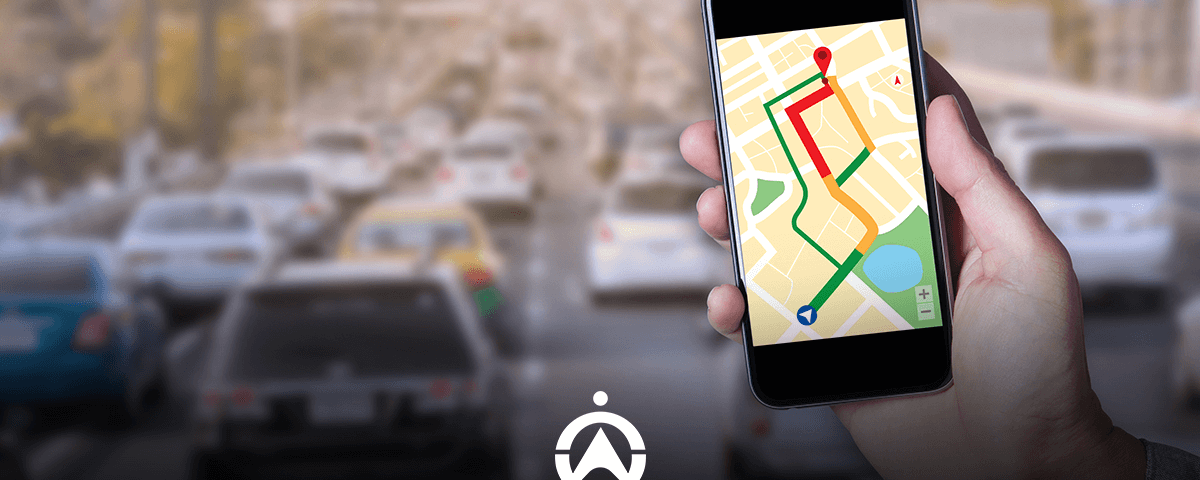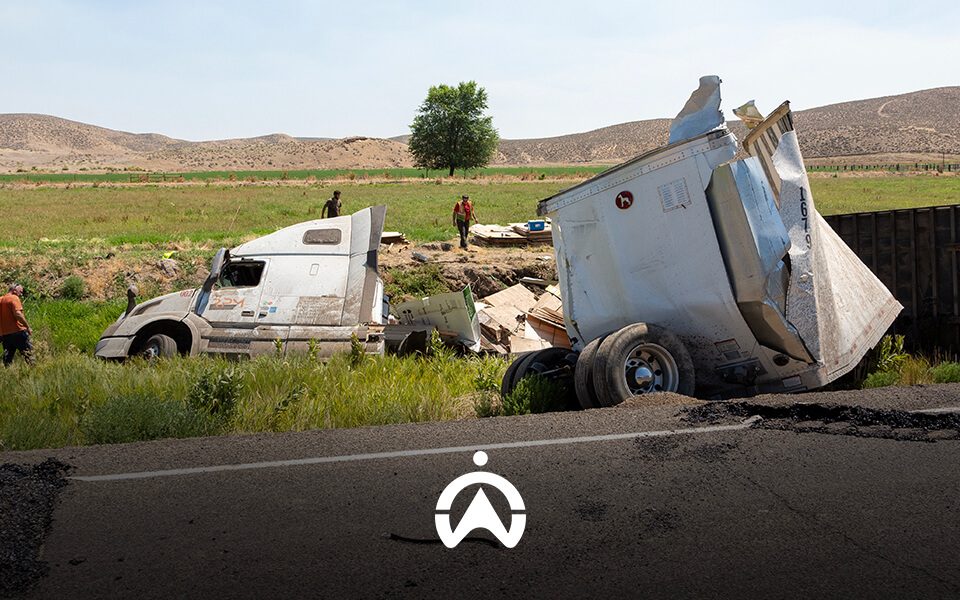The Real Causes of Traffic Congestion and How to Help Your Fleet Avoid Them
In 2016, South Africa was ranked as the 5th most traffic-congested country in the world, with Saffas spending over 40 minutes extra per commute in traffic.
As a fleet manager, helping your drivers avoid congested areas is crucial to keep your fleet operations productive, your services efficient, and your fuel and maintenance costs low.
Luckily, you don’t have to go far to find the answers — we’ve got them all below.
The causes of traffic congestion
There are quite a few reasons why we experience traffic congestion, and while some causes like weather conditions are common globally, South Africa also has a few unique ones that contribute to especially stuffy, slow-moving traffic.
Weather conditions
Depending on the geographical location, different weather conditions will affect traffic conditions.
Excessive rainfall, flooding, and infrastructure damage or road accidents caused by weather conditions contribute to traffic congestion. So, the weather is not always directly responsible for the traffic jams but rather the after-effects of weather events that obstruct roads, leading to congestion.
Construction
Apart from being just an irritation for roadgoers, these projects can significantly impact traffic flow. Lane closures, detours, and merging zones can create bottlenecks, causing delays and frustration. Additionally, construction material deliveries during peak traffic hours can make congestion even worse. The workers themselves, travelling to and from sites, can contribute by adding to the overall traffic volume.
Poor driving habits
Tailgating, aggressive driving, speeding, and sudden lane changes can all cause accidents and slow traffic flow. Similarly, distracted driving, like texting while driving, can also lead to accidents, causing congestion and backups on otherwise congestion-free roads.
Inadequate public transport
Ever feel like you’re stuck in a sea of brake lights, wishing there were more ways to get around? Inadequate public transport plays a big role in this frustrating reality. When public transport lacks sufficient capacity and coverage, people just don’t have the option of using it, pushing them towards private vehicles that clog the roads, worsening traffic congestion.
Potholes
These road craters aren’t just a nuisance; they’re legit traffic flow disruptors. Studies show potholes can slow down traffic, impacting overall flow and efficiency. In the UK alone, 90% of drivers have encountered them, contributing to their commute frustrations.
Potholes can damage vehicles, forcing drivers to slow down or pull over. On top of that, they are common culprits to congesting roadways, causing other cars to have to navigate around them. Potholes can also lead to accidents and road closures, slowing traffic and causing frustration.
Load shedding
Load shedding is an only-in-Mzansi nightmare, heavily affecting traffic congestion and other local issues like poor road conditions. What makes it worse is that load shedding is prone to short-notice level changes, making it difficult to plan effective fleet routes as nobody’s ever sure which traffic lights will be working. Intricate road networks are designed to function optimally with working traffic lights, and without them, traffic is an absolute disaster.
Infrastructure issues
No matter where your fleet operates, there are bound to be infrastructure issues, as it’s a common problem in many cities and towns across the country. Infrastructure problems include a lack of new roads, bridges, highways, and even roadworks caused by the construction of new infrastructure.
Overall, there’s a dire need for re-engineering, fixing broken traffic lights, and road maintenance in most cities to alleviate congestion and divert heavy traffic. Fleet managers, however, can make smart route-planning decisions with advanced fleet management software to avoid this mess altogether.

Why your fleet should avoid traffic jams
While it seems obvious why nobody would want to be stuck in a traffic jam, fleet managers have specific reasons why they’d want their drivers to avoid these at all costs.
- Time wasting
If you’re in control of a fleet business, you know that time is money. The more time your drivers waste stuck in traffic, the more productivity issues you’ll experience that can lead to cost drainages and make you feel out of control. Even more so, if your fleet delivers goods that are either perishable or the deliveries are time-sensitive, traffic congestion puts major pressure on your drivers and your business to maintain customer satisfaction and avoid cargo spoilage and profit drainage.
- Non-compliance
While one or two drivers may get away with shaving a minute or two off their trip by driving on the yellow line and cutting off the cars in front, this behaviour worsens traffic congestion for all road-goers and contributes to fleet non-compliance.
- Fuel wastage Traffic congestion is a major cause of excessive idling. While it may be more fuel-savvy to turn off your ignition if the vehicle is stationary for more than ten seconds, congested traffic sometimes moves almost constantly at minuscule distances, with other drivers ready to sound their horns if you don’t keep on inching your car forward with the rest of the frustrated motorists every time there’s movement.
Let Cartrack Swaziland help you outsmart traffic congestion in your fleet for profit boosts and peak efficiency
- Route planning and optimisation
Make sure your drivers don’t end up in traffic jams and save on fuel by sticking to designated, carefully planned routes with our route planning tool. Use Cartrack’s route optimisation tool to create smart routes based on important factors like traffic, boosting productivity and increasing vehicle longevity.
- Vehicle tracking
Get full visibility of your fleet and track your drivers in real time with our advanced GPS vehicle tracking system. Knowing where your drivers are puts you in control of your fleet and making proactive changes that could save you time and money.
- Delivery app
Stay connected with your drivers no matter where they are with instant job assignments, updates, and prioritisations, helping your fleet work smarter and faster around traffic-congested areas and helping you make the most of every shift, every day.
- Camera solutions Cartrack’s LiveVision camera solution offers in-cabin and road-facing wide-angle cameras with footage that can be live-streamed on the Fleet Pages platform, helping you keep tabs on your drivers and traffic conditions, maintain vehicle health, and avoid unnecessary complications like cargo overheating while your drivers are stuck in a traffic.
How Cartrack’s route optimisation tool helped Calgan Recliners improve efficiency
At Cartrack Swaziland, we’re focused on helping you increase productivity to boost profits. Here’s how Calgan Recliners, a major South African furniture manufacturer, benefited from our route optimisation software:
- Calgan Recliners, based in Johannesburg, has been in the furniture industry for over 25 years.
- In 2023, Cartrack Delivery specialist Wayne Sholtz experimented with Cartrack Delivery to help Calgan Recliners potentially increase productivity and lower fuel costs.
- Analysing one of their main delivery trucks’ routes, which had 15 deliveries covering 195 km, Cartrack Delivery’s route optimisation feature reduced the distance to 165 km, saving approximately seven litres of fuel.
- Using Cartrack Delivery could save Calgan Recliners about 13% on fuel costs for just one truck, with potentially greater savings across their entire fleet.
Cartrack Delivery’s route optimisation feature helps businesses reduce delivery distances, leading to faster deliveries and increased cost-efficiency, ultimately improving productivity and customer satisfaction.
Let Cartrack Swaziland help your fleet ease through congested traffic
We know how important optimal productivity is for increased profits and fleet management success. Contact us today to start navigating your fleet out of traffic jams and into next-level efficiency.

Answers to traffic congestion every fleet manager should know
- What are the causes of traffic congestion?
Various factors, including insufficient road capacity, incidents like crashes or breakdowns, roadworks, accidents, and traffic overload on specific routes, can cause traffic congestion. Other factors include road works, weather conditions, and infrastructure issues.
- How do you stop traffic congestion?
Whether you’re an individual, driver, or fleet manager, there is no way to stop traffic congestion. There are smart ways to ensure you don’t get stuck in it or become part of the problem:- Travel during off-peak traffic when you can
– Use GPS route planning technology
– If you’re commuting, try carpooling
– If there’s safe public transport available, consider using it
- How can we avoid traffic jams? The best way to avoid traffic jams is to use the latest fleet management and GPS route planning and route optimisation technology. Whether you’re a fleet driver or an individual using your car for private trips, this advanced tech helps you avoid congested areas for a faster, more efficient journey.
Don’t wait until your fleet is stuck in traffic again. Contact Cartrack today and boost your fleet and business’s productivity and profits.




